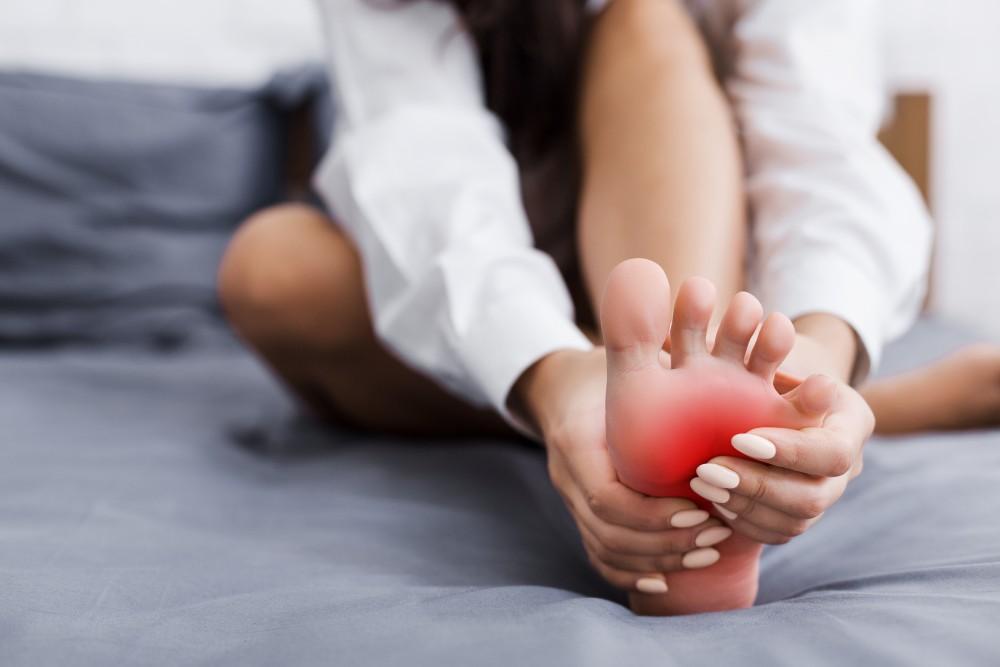
How Foot Symptoms Are Indicators of Whole-Body Health

Your feet are your literal foundation, and they’re wisely designed — each has 33 joints, over 100 tendons and ligaments, 26 bones, and vital nerves and blood vessels. The condition of your feet affects your general health, from the bottom up, so to speak.
April is National Foot Health Awareness Month, and it’s time to look at your hardworking feet since they’re often taken for granted until there’s a problem!
Fortunately, our team of experts at Premier Foot & Ankle understands foot mechanics and health very well, and we offer advanced treatment for many foot conditions, from bunions to diabetic foot care, so you can keep moving.
How your feet are related to your overall health
It’s important to stop and think about how your feet reflect what’s going on with your health because they do! We compiled a list of foot symptoms that point to other health conditions so you can know when to seek further care.
1. Swollen feet
Swollen feet indicate several potentially serious problems. Foot swelling may be a sign of high blood pressure, which raises your risk of stroke and emergent conditions like congestive heart failure and liver or kidney failure, so don’t delay seeking care if your feet or ankles become puffy.
Swelling may also indicate lymphatic system problems or a blood clot.
2. Cold feet
“Cold feet” isn’t just a saying that means you’re hesitant!
If your feet are persistently chilled, you could have peripheral vascular disease (PAD), a condition caused by fatty deposit accumulation in your arteries, which leads to poor blood circulation in your arms and legs. PAD causes leg pain and arm and leg numbness and tingling.
Cold feet may also point to a thyroid condition.
3. Foot tingling or numbness
These are neuropathy symptoms and may suggest diabetes. Seek care quickly, because a small cut or scratch can become a diabetic ulcer that won’t heal, leaving you vulnerable to tissue death and amputation.
4. Toenail changes
A common problem is toenail fungus, where your nails become thick and yellow, but if your nails have turned pale and have sunken areas in them, you may be anemic.
5. Stress fractures
Stress fractures, especially in women, are a sign of osteopenia, the precursor to osteoporosis, a condition that weakens your bones. These fractures can happen anywhere, so your feet aren’t immune.
6. Toes that change color
If your toes have a pattern of turning white, then blue, then red, and then return to their normal tone, you may have Raynaud's Disease. This condition causes your toes to turn color because of a sudden narrowing of the arteries in your toes, typically due to temperature changes or stress.
It’s important to get evaluated by a provider because Raynaud's Syndrome can also be associated with rheumatoid arthritis and thyroid issues.
7. Fiery feet
If your feet burn, it can be a symptom of a number of conditions, including:
- Diabetes linked to peripheral nerve damage
- Athletes foot
- Kidney disease
- PAD
- Vitamin B deficiency
- Hypothyroidism (an underactive thyroid)
It’s better to be safe than sorry and talk to your Premier Foot & Ankle podiatrist if you experience any burning feelings in your feet.
8. Claw toe
If your toes take on a claw-like appearance and bend, this indicates nerve damage. Diabetes, alcoholism, and a neurological disorder are all possible culprits.
9. A spot on your foot
If a dark spot appears on your foot, it could be melanoma, a serious type of skin cancer. Contrary to popular belief, skin cancer can develop even on parts of your body that aren’t frequently exposed to the sun.
These spots can also develop underneath your toenail.
10. Foot spasms
If your foot cramps often, you might have simply overworked it, but it may also mean you’re dehydrated or have a calcium, magnesium, potassium, or vitamin D imbalance.
Don’t neglect your feet
Because your feet are such clear reflections of your general health, it’s important to treat them well. What does this look like? It’s important to wash your feet daily, examine them for any unusual signs, and give them some TLC by wearing well-fitting shoes.
Another important takeaway? Never hesitate to visit your Premier Foot & Ankle provider if you notice anything awry with your feet. That’s what we’re here for!
We can provide any needed treatment, whether you have an injury or an ongoing podiatric condition, or if we think a foot symptom may be associated with a bigger health concern, we’ll recommend you see your primary care provider or a specialist.
If you have any concerns about your feet, contact one of our five convenient Texas locations today. Call us or book online anytime.
You Might Also Enjoy...


How to Get to the Root of Your Chronic Heel Pain

5 Ways to Care for Your Athletic Feet This Year

How to Keep Toenail Fungus From Spreading

How Does SUDOSCAN® for Peripheral Neuropathy Work?


